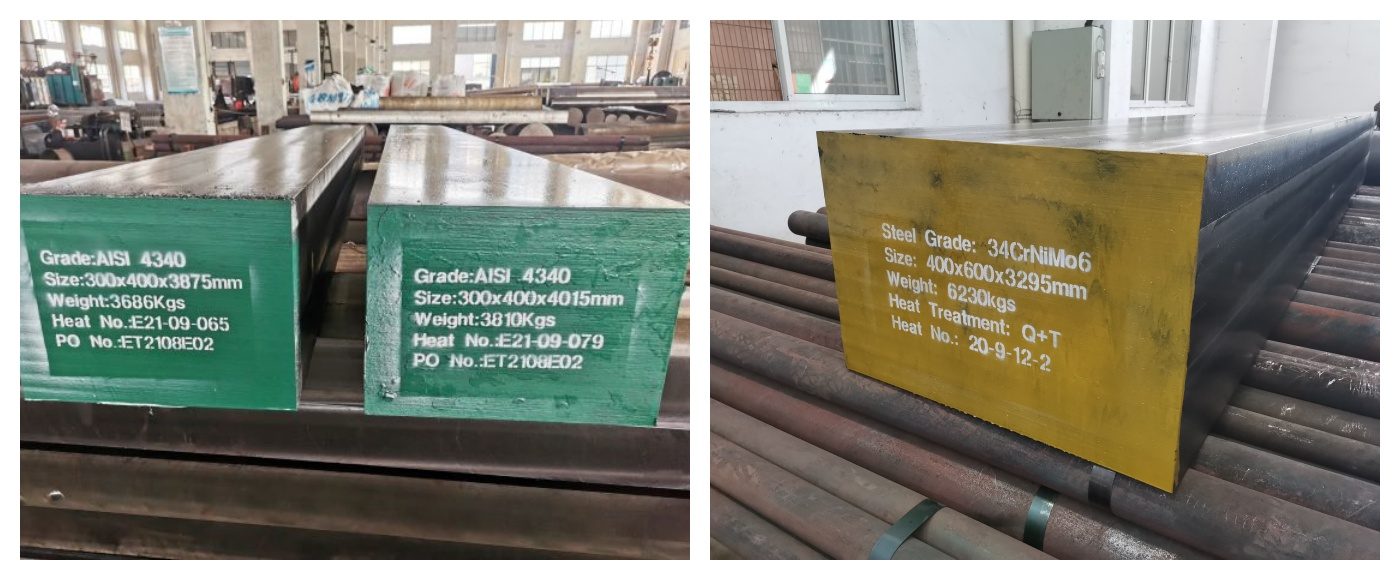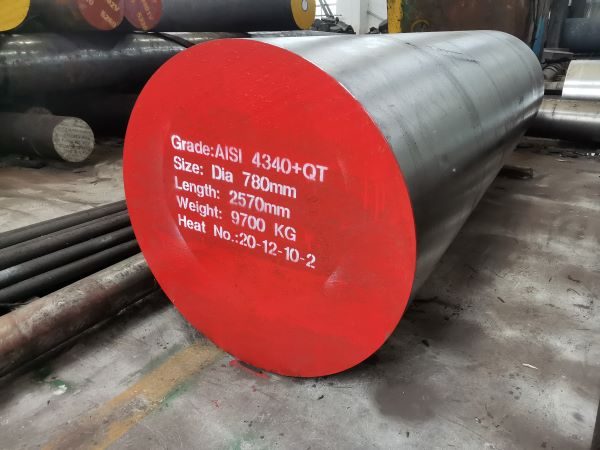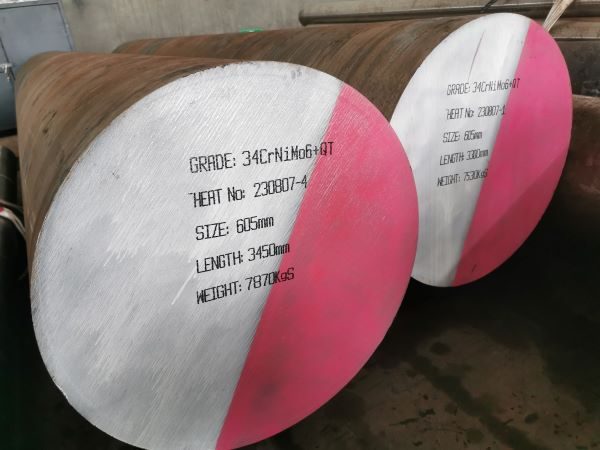Comprehensive Comparison: 4340 vs 34CrNiMo6
34CrNiMo6 (European EN standard) and 4340 steel (American SAE/AISI standard) are both medium-carbon alloy structural steels, which are widely used in key components with high stress and high fatigue strength. The following is a comparison from multiple dimensions:
1. Chemical Composition Comparison
| Elements | 34CrNiMo6 (EN 10083-3) | 4340 (ASTM A29) |
| C (Carbon) | 0.30-0.38% | 0.38-0.43% |
| Cr (Chromium) | 1.30-1.70% | 0.70-0.90% |
| Ni (Nickel) | 1.30-1.70% | 1.65-2.00% |
| Mo (Molybdenum) | 0.15-0.30% | 0.20-0.30% |
| Mn (Manganese) | 0.50-0.80% | 0.60-0.80% |
| Si (Silicon) | ≤0.40% | 0.15-0.35% |
| Other | Trace S and P impurities | Trace S and P impurities |
Key differences:
- Carbon content: 4340 has higher carbon content, better hardenability, but slightly lower toughness.
- Nickel content: 4340 has higher nickel content, which improves low-temperature toughness; 34CrNiMo6 has higher chromium content and slightly better corrosion resistance.
2. Comparison of Mechanical Properties (quenched + tempered)
| Parameters | 34CrNiMo6 | 4340 |
| Tensile strength (MPa) | 900-1100 | 930-1080 |
| Yield strength (MPa) | ≥700 | ≥785 |
| Elongation (%) | ≥12 | ≥12 |
| Impact toughness (J, 20℃) | ≥40 (V-notch) | ≥35 (Charpy impact) |
| Hardness (HRC) | 28-32 (quenched and tempered) | 28-34 (quenched and tempered) |
Key differences:
- Low-temperature toughness: 34CrNiMo6 has better corrosion resistance and high-temperature strength due to its higher chromium content; 4340 has better impact toughness at low temperatures (below -40°C) due to its high nickel content.
- Fatigue strength: 4340 is slightly higher and suitable for high-cycle fatigue applications (such as aviation components).
3. Heat Treatment Process
- 34CrNiMo6:
– Quenching: 850-880℃ oil quenching.
– Tempering: 540-680℃ (adjusted according to strength requirements), air cooling.
– Surface carburizing or nitriding can be performed to enhance wear resistance. - 4340:
– Quenching: 815-845℃ oil quenching or water quenching (depending on the cross-sectional size).
– Tempering: 425-650℃, air cooling.
– Be aware of temper brittleness (avoid long stays in the 300-400℃ range).
Key differences:
4340 is easier to achieve deep hardening (suitable for large cross-section parts), but the tempering process needs to be strictly controlled.
4. Application Fields
- 34CrNiMo6:
– Heavy gears, crankshafts, high-load bolts, ship drive shafts.
– European automotive/heavy industry (such as German DIN standard applications). - 4340:
– Aircraft landing gear, connecting rods, oil drill pipes, military equipment.
– American aviation and military fields (such as Boeing, Lockheed Martin commonly used).
5. Corrosion Resistance
- Neither of them is stainless steel, has limited chromium content, and has average corrosion resistance.
- 34CrNiMo6 has slightly better oxidation resistance in humid environments than 4340 due to its higher chromium content.
- Corrosion resistance needs to be improved by plating (chrome plating, nickel plating) or painting.
6. Machinability & Welding Performance
- Machinability: Both can be machined in the annealed state, and 4340 has slightly faster tool wear due to its high carbon content.
- Weldability:
– Both require preheating (200-300℃) and post-heat treatment to avoid cracks.
– 34CrNiMo6 has slightly poorer weldability (higher alloy content leads to greater hardening tendency).
7. Cost & Supply
- Raw material cost: 4340 is usually 10-15% higher than 34CrNiMo6 due to its high nickel content.
- Regional supply: 34CrNiMo6 is more popular in Europe, and 4340 is more common in North America and Asia Pacific.
Summary & Material Selection Recommendations
- Choose 34CrNiMo6:
– Requires high corrosion resistance or high temperature strength (≤400℃).
– European standard projects or cost-sensitive industrial parts. - Choose 4340:
– Low temperature environment (such as polar equipment) or large cross-section high hardenability requirements.
– Aviation/military fields or projects that follow US standards.
Note: The final material selection needs to be combined with specific working conditions (load, temperature, corrosion environment) and local supply chain capabilities.





